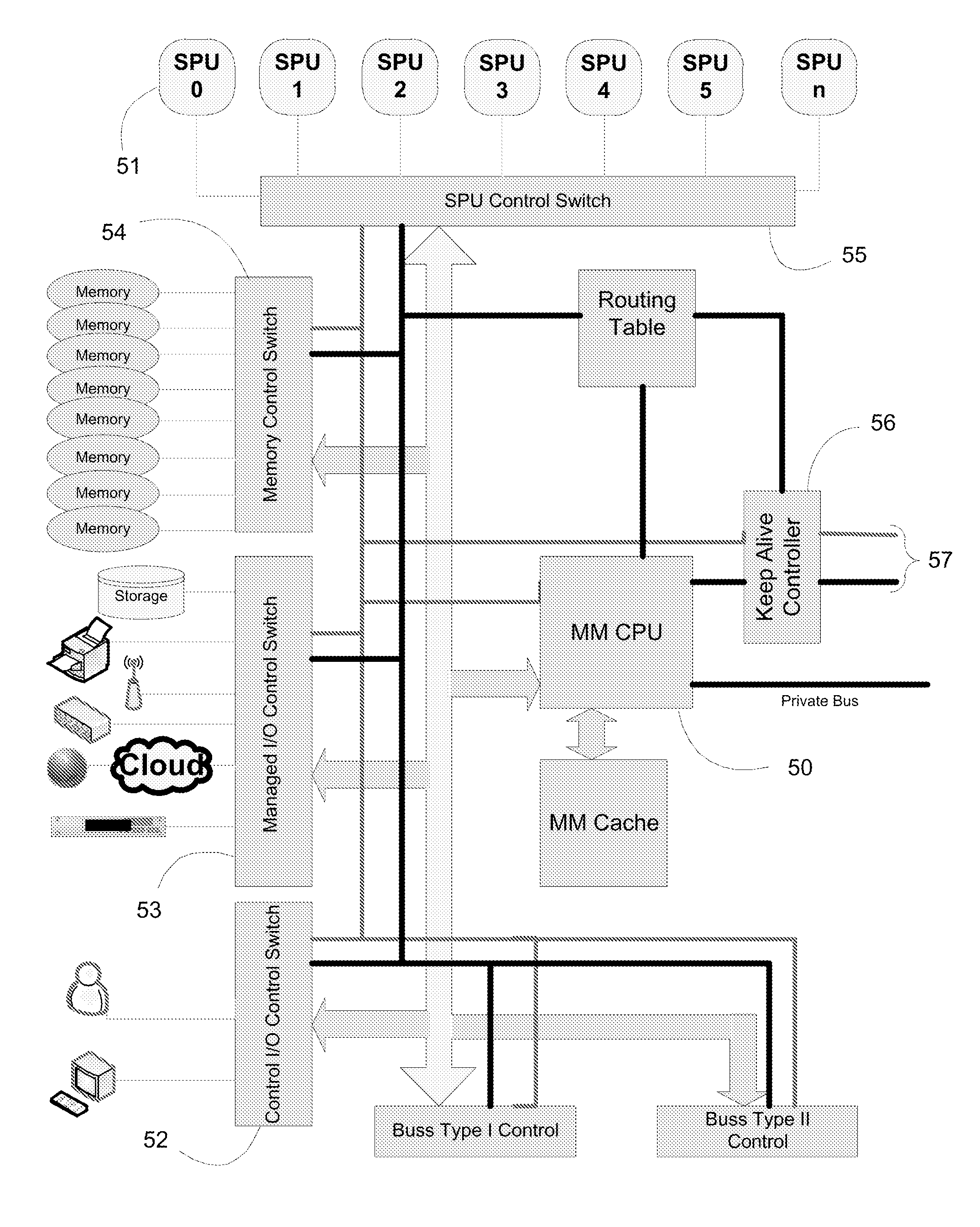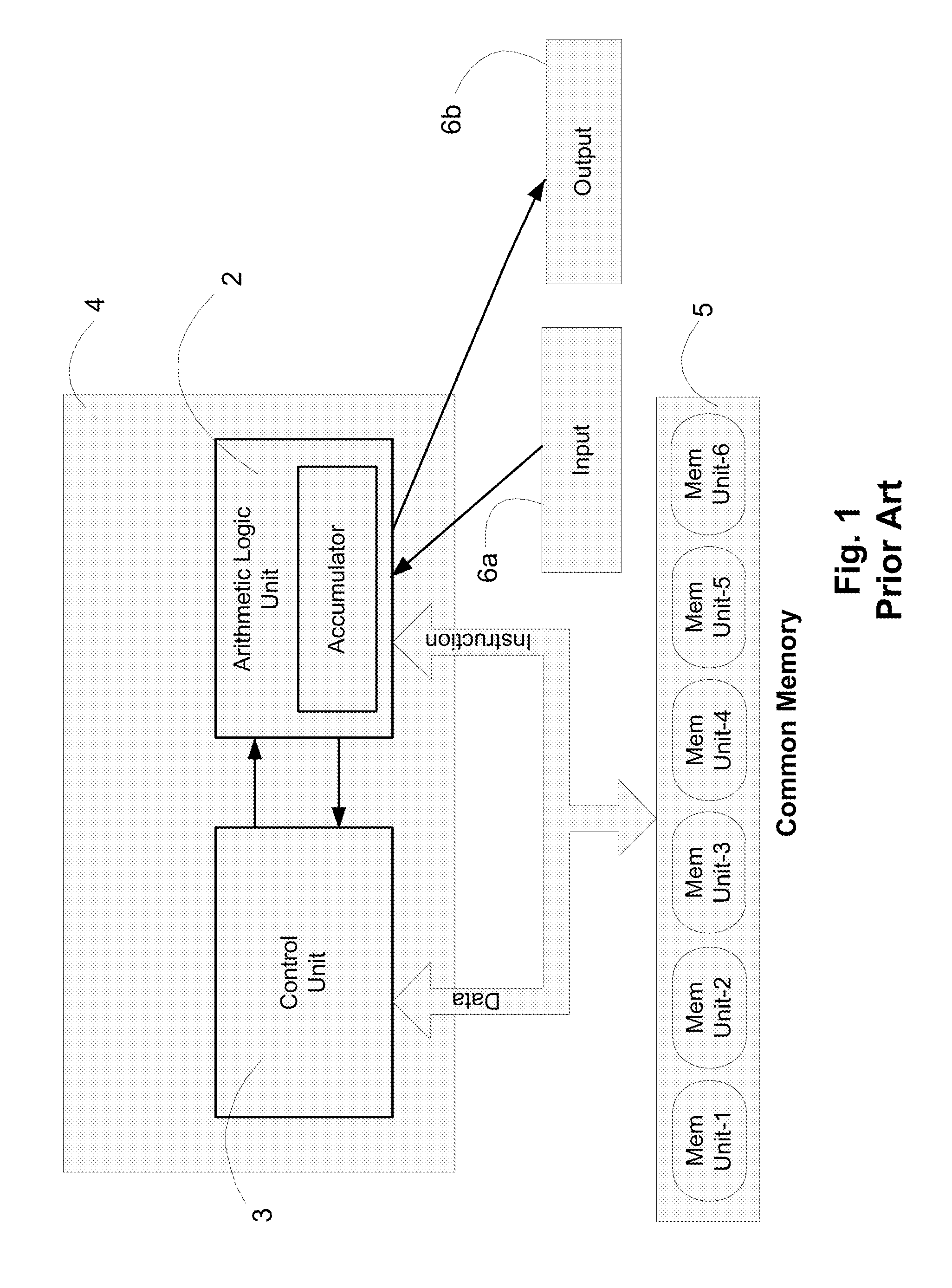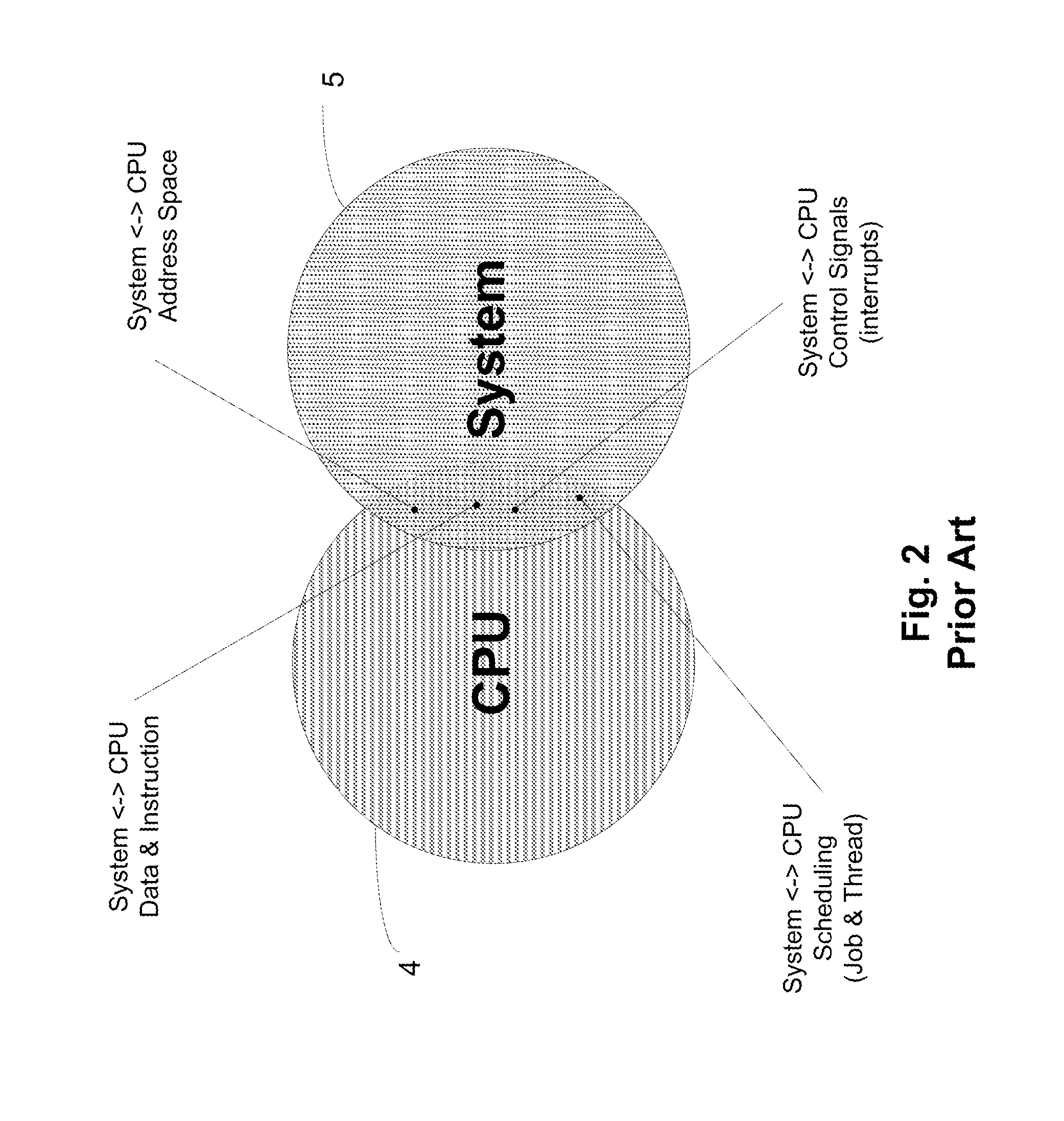Dynamically Erectable Computer System
a computer system and dynamic technology, applied in the direction of memory address/allocation/relocation, instruments, handling data according to predetermined rules, etc., can solve the problems of dataflow systems that do not theoretically have program counters and execute processes, and the speed in which the alu can process data is limited
- Summary
- Abstract
- Description
- Claims
- Application Information
AI Technical Summary
Benefits of technology
Problems solved by technology
Method used
Image
Examples
Embodiment Construction
[0102]Referring to FIG. 17 illustrated is a basic Meta Mentor (MM) in block form using a virtualizing switch that is represented by the “SPU Control Switch”. This MM architecture as disclosed herein is analogous to the invention addressed in U.S. Pat. No. 7,484,032 B2 but distinctly novel. Also shown in FIG. 17 are the logical controls for the switch, MM CPU, MM Cache, Routing Table, and Keep Alive Controller. Included is an MM central processing unit (MM CPU) 50 which can be a single device or a series of devices that operate to perform this function. The MM can even be implemented in a state machine. According to the invention disclosed herein, the MM CPU operates in the MM domain and runs the overseeing algorithm that monitors, stores, and controls all of the events pertaining to the machine. It schedules threads to an array of slave processing units (SPUs) 51, monitors their progress and can detect faults signals. It distributes system and I / O resources and creates interrupts to...
PUM
 Login to View More
Login to View More Abstract
Description
Claims
Application Information
 Login to View More
Login to View More - R&D
- Intellectual Property
- Life Sciences
- Materials
- Tech Scout
- Unparalleled Data Quality
- Higher Quality Content
- 60% Fewer Hallucinations
Browse by: Latest US Patents, China's latest patents, Technical Efficacy Thesaurus, Application Domain, Technology Topic, Popular Technical Reports.
© 2025 PatSnap. All rights reserved.Legal|Privacy policy|Modern Slavery Act Transparency Statement|Sitemap|About US| Contact US: help@patsnap.com



